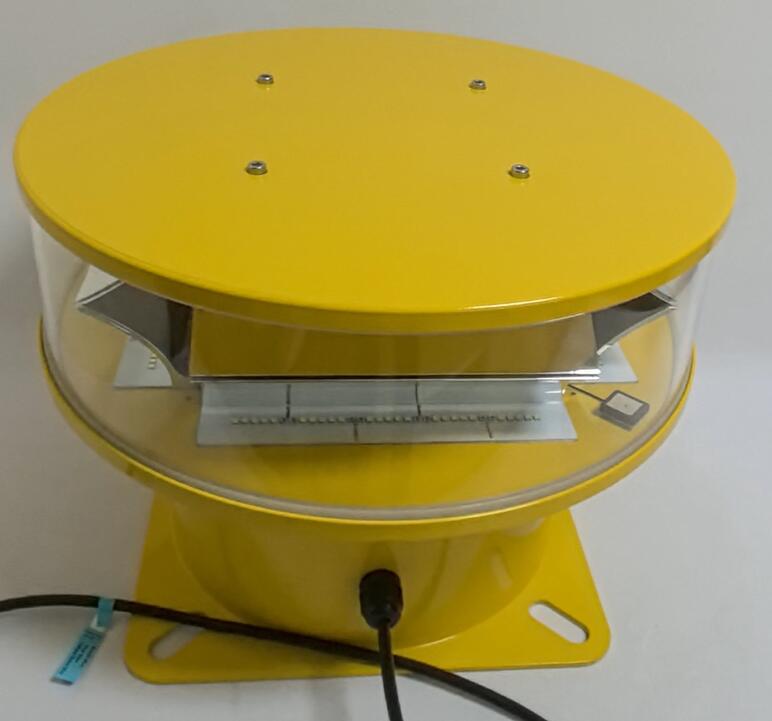LED aviation navigation lights have become indispensable components in both civil and military aviation, serving as critical visual aids for aircraft identification, collision avoidance, and safe navigation. These lights have largely replaced traditional incandescent and halogen systems due to their superior performance and reliability. This article examines the key features, regulatory standards, and technological advancements that make LED aviation navigation lights the preferred choice in today's aviation industry.
1. The Role of LED Aviation Navigation Lights in Flight Safety
Aviation navigation lights serve three primary purposes:
Position Indication: Help pilots determine an aircraft's orientation (red for port side, green for starboard, white for rear).
Collision Avoidance: Enable other aircraft to recognize direction and take evasive action if needed.

Regulatory Compliance: Mandatory under international aviation laws for all registered aircraft.
LED technology enhances these functions through:
Instant illumination (no warm-up time)
| led aviation navigation lights |
Higher visibility in adverse weather conditions
Reduced power consumption compared to traditional bulbs
2. Regulatory Standards Governing LED Aviation Navigation Lights
All navigation lights must comply with strict international regulations:
ICAO Annex 6 & 8: Specifies minimum visibility requirements
FAA TSO-C30/37d: Technical Standard Order for position lights
| led aviation navigation light |
EASA CS-23/25: Certification specifications for light intensity and durability
RTCA DO-160: Environmental testing standards
Key compliance factors include:
Beam spread (110° for wingtip lights)
Color chromaticity (precise wavelength requirements)
Minimum visibility range (typically 3+ nautical miles)
3. Advantages of LED Over Traditional Lighting Systems
LED aviation navigation lights offer significant operational benefits:
Performance Enhancements:
50,000+ hour lifespan (vs. 1,000-2,000 hours for incandescent)
60-80% lower power draw
Vibration and shock resistance
Safety Improvements:
No glass components that can shatter
Instant full brightness (critical during emergencies)
Consistent light output over time
Maintenance Benefits:
No filament burnout
Reduced replacement frequency
Lower total lifecycle costs
4. Technical Specifications of Modern LED Navigation Lights
Leading systems feature:
High-intensity LEDs (5W-20W per unit)
Integrated heat dissipation (aluminum housings with thermal management)
Smart monitoring circuits (failure detection alerts)
Dual/triple redundancy (backup LEDs for critical applications)
Advanced models may include:
Automatic brightness adjustment (based on ambient light)
Wireless status reporting (via aircraft health monitoring systems)
EMI shielding to prevent interference with avionics
5. Installation and Maintenance Considerations
Proper implementation requires attention to:
Aerodynamic design (minimal drag impact)
Waterproof ratings (IP67 or higher for wingtip installations)
EMC compliance (no interference with communication systems)
Weight distribution (particularly important for small aircraft)
Maintenance best practices:
Regular lens cleaning (maintain optimal light transmission)
Periodic connector inspections (prevent corrosion)
System diagnostics during routine checks
6. Emerging Trends in LED Aviation Lighting
Innovations shaping the future include:
Li-Fi enabled lights (for aircraft-to-ground data transmission)
Adaptive lighting systems (auto-adjusting for weather/visibility)
Solar-charged standby units (for emergency power backup)
3D-printed custom housings (weight-optimized designs)
LED aviation navigation lights represent a fundamental safety technology that continues to evolve with aviation advancements. Their superior reliability, energy efficiency, and compliance with stringent regulations make them essential for all aircraft operations. As the industry moves toward more intelligent and connected systems, LED navigation lights will undoubtedly incorporate smarter features while maintaining their critical role in flight safety.
For aircraft operators and manufacturers, selecting the appropriate LED aviation navigation lights involves careful consideration of regulatory requirements, technical specifications, and operational needs. By prioritizing quality and compliance, the aviation community can ensure safer skies for all.